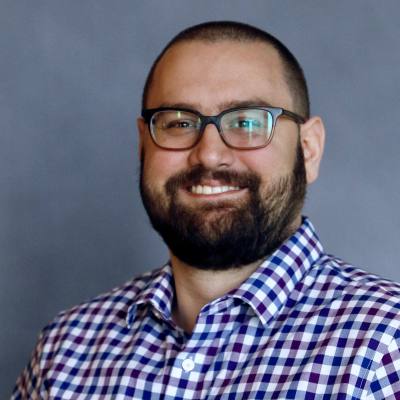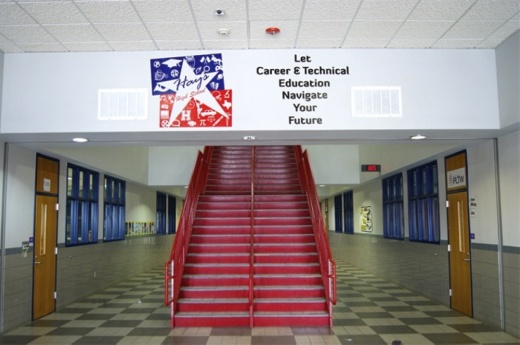In previous years, learning loss referred to the information students forget between semesters, but it is now being used to describe the knowledge students either never acquired or did not retain due to the pandemic's effect on education, such as the implementation of virtual learning.
Standardized state testing showed nearly every subject at every grade level was impacted by learning loss, but student’s performance in math was particularly hard hit. Social and emotional learning, observed by teachers and parents, was also hindered. Among pre-K students, even fine motor skills took a hit.
“[Pre-K students] came to school for the first time this summer, and one of the things that we discovered is that they had a very difficult time just holding a pencil or a crayon,” Sedillo said.
Derrick McDaniel, Hays CISD’s director of curriculum and instruction, had some idea of what lay ahead for students and teachers.
“The rule of thumb that we're looking at is this is going to be two to three years before we really get back to where we were mathematically in 2019,” he said.
Results from the spring 2021 State of Texas Assessments of Academic Readiness, or STAAR, provided educators and parents with some insight to the severity of the issue when compared to the 2019 STAAR. The assessments were not performed in 2020 because of the pandemic.
“The lack of consistent everyday practice with mathematics and specific individualized feedback was extremely tough in the virtual world, and in mathematics, you need constant feedback,” McDaniel said.
In the 17 subjects tested across grades one through eight, the number of students whose score approached grade level, which is the minimum standard of preparation for the subject in the next grade level, decreased by an average of 12 percentage points statewide, down to 63%.
HCISD did marginally better in learning loss than the state average with a 10% average decline but also fell to 63%. San Marcos CISD saw a larger drop, with the average number of students scoring ‘approached’ decreasing from 66% to 49%.
One of the more extreme examples of learning loss was in SMCISD’s eighth-grade math assessment. In 2019, 98% of SMCISD students approached grade-level performance. However, that rate dropped by 59% in 2021 to just 39%.
The majority of STAARS subjects had double-digit slumps in both HCISD and SMCISD.
District officials were intent on reassuring students and teachers the situation was no fault of their own, but rather another unwanted effect of the pandemic.
Administrators and teachers across the state are now tasked with closing the learning loss gap, but it will be a war of attrition.
“Getting out of this thing is going to be a marathon and not a sprint, it's not going to happen within three months, five months,” McDaniel said. “ You can't just tutor them out of this in September, October, November, and think by December, ‘oh, we're kind of back to where we were,’ especially in mathematics.”
Rebounding from learning loss
Terrance Sanders, SMCISD’s new assistant superintendent of teaching, learning and assessment, said, while insightful, state testing only provided a partial appraisal of the situation resulting from the pandemic. Additional inquiries, both formal and informal, would be needed to see where students were at academically and developmentally.
“The tests—yeah, they tell us a story, but they don't give us the complete story,” he noted. “One of the most important pieces of data that we can use at this time is perception data... It's going to be very important for us to be able to get out and get feedback and information from our students, our parents and from the community to see how they feel the learning was affected over the past year.”
Last spring, HCISD gathered a committee of some 50 teachers from elementary schools, and a similar number from secondary schools, to get their perspective on the challenges and impact of the pandemic on teaching.
They identified two core problems. The most severe issue teachers faced was the range of knowledge among students in any given class.
“You're not necessarily a fifth-grade math teacher anymore. You may have students at a third-grade level, a fourth-grade level, a fifth-grade level or sixth-grade level,” McDaniel said. “There's always been some range in education, but after the pandemic we're really anticipating a much wider range.”
Contributing to the learning loss were fewer traditional academic behaviors in the 2020-21 school year, such as reduced listening, reading, speaking and writing, McDaniels noted.
“We've got to get back into those academic behaviors and then kind of assess where we are,” he said, reaching a conclusion similar to Sander’s.
To curtail learning loss and catch students up, the committee put their support behind blended learning, although McDaniels was careful to note it was not the same blended learning heard about in the previous school year, which he referred to as pandemic pedagogy.
Instead, blended learning will focus on using technology to reinforce learning done in person, while also individualizing studies to an extent. Harvested data can be used to group students together and, while it doesn’t replace the teacher, technology can offer the next best thing, McDaniel said.
“The essence of blended learning is individualized instruction, meeting students' different needs, and addressing those needs,” he said. “Blended Learning, sometimes people think is just technology, and we had to be very clear that what we did this past year... was not blended learning.”
McDaniels said a four-year plan on fully implementing blended learning into HCISD’s curriculum was in development, but additional instruction time and adjusted schedules and coursework were also in either development or consideration.
In HCISD, t interventions and tutoring may occur during advisory and homeroom periods, and there will also be increased small group instruction. Sedillo said the district had also considered extended school days or Saturday camps but was initially focusing on adding staff and considering the benefits of adjusted schedules.
“How we structure our day will be critical in order for us to address the instructional gaps,” Sedillo said.
Sedillo noted the importance of planning and communication between teachers of different grade levels, which she referred to as vertical planning.
“A lot of our work is going to involve teachers coming together and vertically having conversations with teachers that teach a grade level below or a grade level above, looking at the essential standards that kids must know, in order for them to be more successful at the next grade level.” Sedillo
For students who did not take the STAAR exam or did not meet the grade-level performance, SMCISD will offer free tutoring before and after school, and on Saturdays, Sanders said.
Danette Myers, a Texas State University professor and mother of two SMCISD students, said she would monitor her daughters' progress reports but would encourage them to find opportunities for tutoring during the school day before tutoring outside of school.
Sanders went on to say his district would be calculated with interventions, and would instead focus on tier one, or evidence-based, instruction.
“The first goal in San Marcos CISD is to ensure that tier one instruction, high-quality tier one instruction, remains a priority as we go into the school year,” Sanders said. “If we don't do tier one instruction well, we're going to have all of our students who are going to need remediation.”
The content of homework will also be adjusted to address learning loss.
“Parents will probably see homework dealing with the content that's being taught, but also content that perhaps was missed from the previous year,” Sedillo said. “It's kind of playing catch up, it’s making sure that we can solidify that kids have those prerequisite skills in order to do well in current content.”
Staff growth and professional development
From the 2019-20 school year to the 2020-21 school year, HCISD enrollment dropped by 471 to 20,322 as parents withdrew their children or delayed the start of schooling. As a result, Sedillo expects the district to grow by 1,200 students in the upcoming school year.
To meet the new growth and demands of catching up on learning loss, Sedillo said the district anticipates hiring 52 teachers, 25 of which will be grant-funded positions, to fill instructional gaps.
“Just being able to add those additional teachers is gonna play a big part.” said Kevin Malandruccolo, HCISD’s director of accountability and testing.
Professional development will also play a key role in preparing teachers for the coming school year, blended learning and accelerated learning.
“There are some standards that are a lot more difficult to teach, and so that's where we have to support our campuses with professional development,” Sedillo said.
HCISD has hosted at least two conferences since the last school year ended, including a highly attended one at the end of July.
“Teachers are off contract now, but we have over 400 teachers signed up for this conference that we're running over the next two days,” Malandruccolo said July 27. “They’re absolutely putting the work in.”
Despite increased staffing and training in HCISD, Sedillo is still asking parents to understand recovering from learning loss will be a process.
“There needs to be some patience with teachers, they will be learning a new curriculum,” Sedillo said. “Vertical teaming is about learning where kids are going and where they're coming from, and they will need that time and space to plan and to have conversations with colleagues.”
It takes a village
There are several other factors governing how the next school year will go. Administrators said parents would have a vital role to play in their children recovering from learning loss and maintaining good mental health during accelerated learning.
Myers expressed concern about the amount of work students could face, and the need for breaks.
“We just kind of took [the mental health aspect] for granted [last year], but I think that has risen to the top and the forefront of our agendas,” Myers said. “If we support our students now, they will be much more productive adults able to deal with mental health, whatever that [entails].”
Sedillo said HCISD staff would be checking in regularly with both students and teachers to make sure they were in a good state of mind. SMCISD also plans to monitor mental health.
“We want to first and foremost start off by making sure that we keep at the forefront the mental health of our students and our staff,” Sanders said. “We all have suffered in different ways and we've got to provide our students and our staff with a safe place to be able to address those issues, because if we don't do that we're not going to be able to dive right into the instruction that must happen.”
Social and emotional learning was limited in the last school year as some students learned from home, while in person students had to be socially distanced.
Sedillo said students would be encouraged to join organizations to build relationships and interests. She said parents must also play a role in ensuring their children remain positive, while also promoting literacy by reading to young children.
“Ask them about their experiences in school, and just make sure that they feel safe and that they belong... so that we can ensure every child has a healthy mindset about... [acclimating] back into the school,” Sedillo said.





